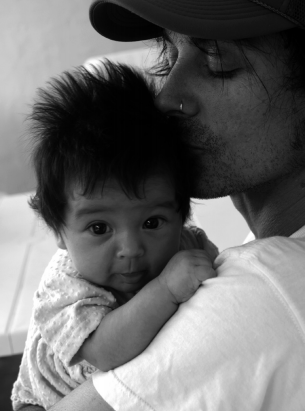Engaging Boys and Men to Achieve Gender Equality

This article describes the efforts of the MenCare+: Engaging Men in a 4 country Initiative. MenCare+ was developed from the tenets of the MenCare Campaign, a 3-year, 4-country collaboration between Rutgers WPF and Promundo-US. The campaign engages men, ages 15-35, to be more care giving partners in maternal and child health and sexual and reproductive health rights as a mechanism for promoting and achieving gender equality.
Goal: “Patriarchal norms and values are to be addressed by questioning harmful notions and practices of manhood. This includes creating safe spaces for men and women to redefine concepts of manhood, relationships, sexuality and care-giving. To achieve this, MenCare+1 calls for:
- A greater focus on engaging men as supportive partners in the promotion of Sexual and reproductive health rights, particularly in family planning, prenatal and antenatal maternal health, the prevention of Sexually Transmitted Infections (STI’s) and HIV/AIDS.
- Programs and policies focusing on preventing Gender Based Violence (GBV) to include a focus on engaging men as partners, allies, potential victims. For men who are abusive, counseling services are to be offered.
- Programs and policies enabling fathers to take up a greater care-giving role, such as paternity leave.
Men Care+ addresses harmful social and cultural norms and behaviors that negatively impact on the sexual and reproductive rights of women. Men Care supports activities that achieve more positive male norms, reduce gender-based violence and increase sexual and reproductive health and maternal health services. Men Care believes that assisting men in becoming better caregivers and fathers is an effective way to promote better mother and child health outcomes, as well as men's support for women's use of contraceptives. The activities and the findings resulting from this programs engages activities will be very useful in informing ongoing strategies for engaging men and boys in gender equality promotion.
Impact: The design of this project was based on in part on findings from the Evolving Men: Initial Results from the International Men and Gender Equality Survey (IMAGES). IMAGES is a component of the Men and Gender Equality Policy Project coordinated by ICRW and Instituto Promundo.
- Strategies may be adapted for use in the US with locally relevant data, information and attaching to established prevention programming.
- Domestic violence and sexual assault advocates should cultivate partnerships with local health care practitioners, family planning clinics and others to leverage resources and to collaboratively plan activities and strategies.
- Developing locally relevant media and print materials may be costly and will have to be considered as an up front outreach expense in order to implement strategy successfully.

